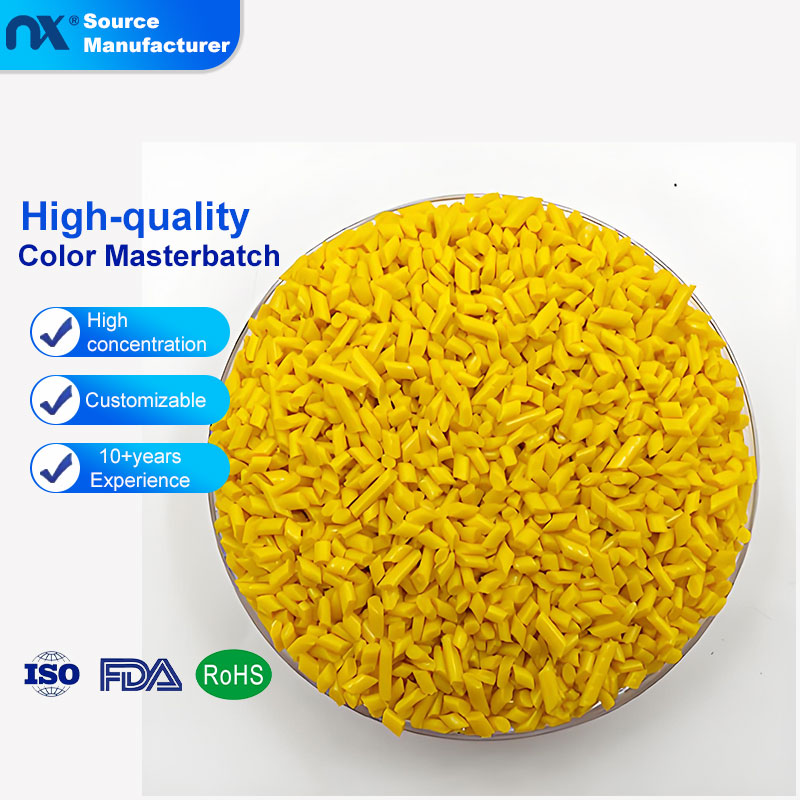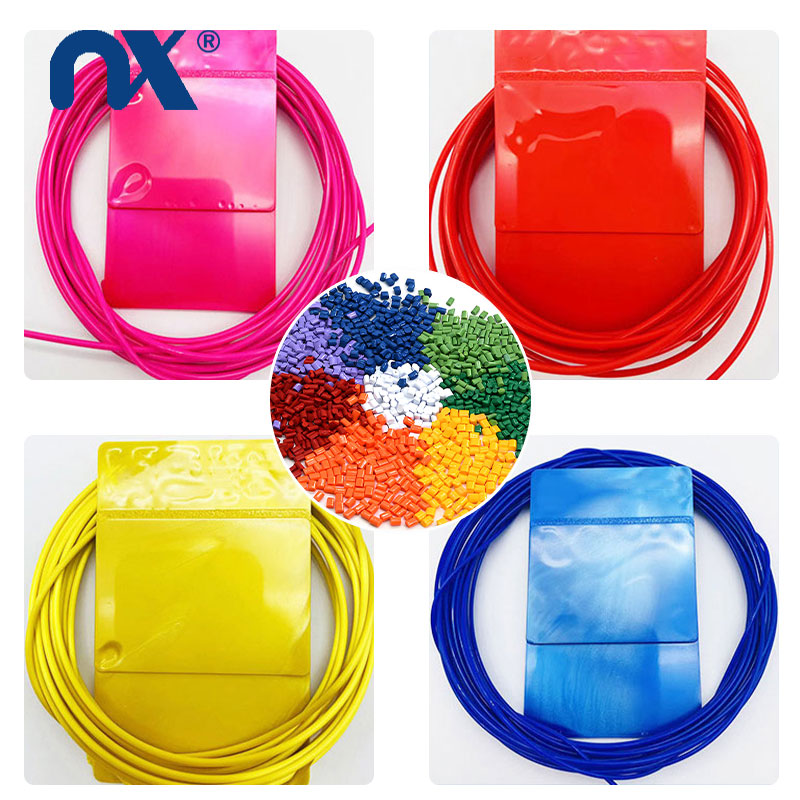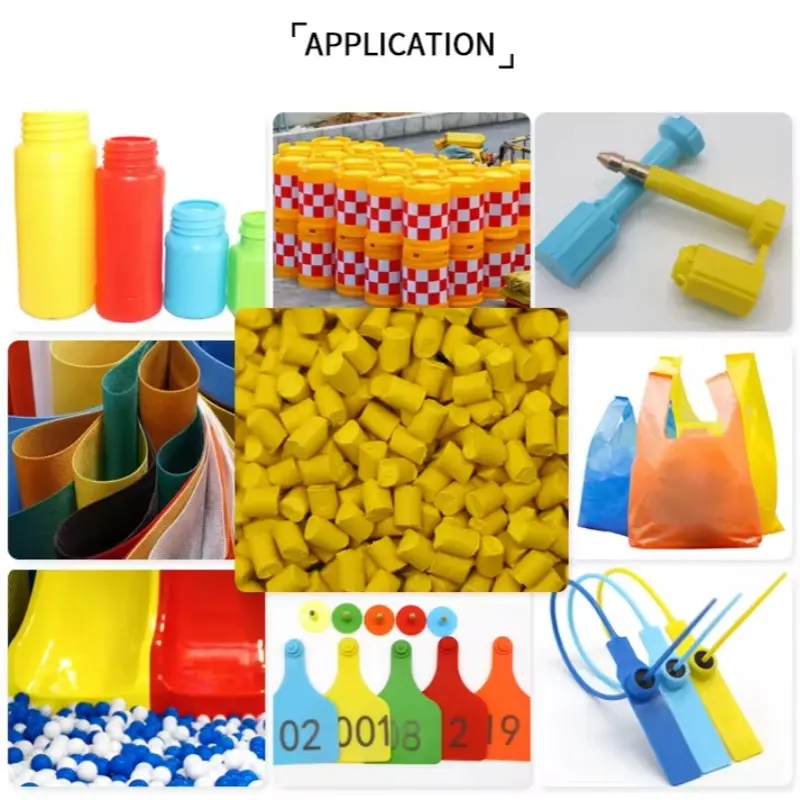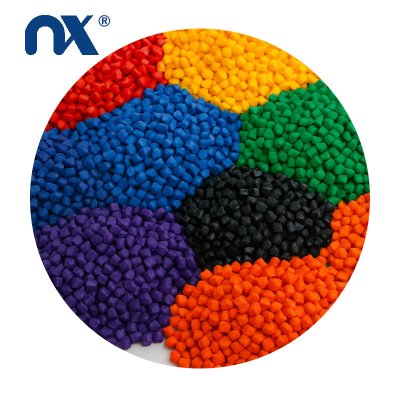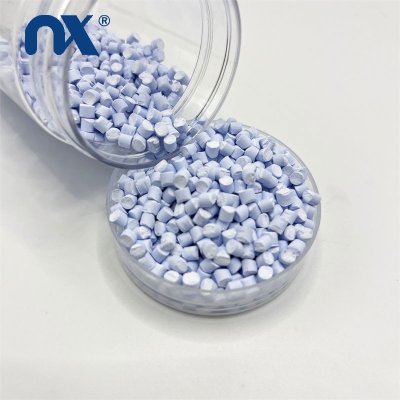Plastic Yellow Color Masterbatch
- High Dispersion— uniform shade, fewer defects
- Heat & UV Stable— reduced fading & yellow shift
- Carrier‑Matched— PP/PE/ABS/PET/PLA compatibility
- Clean Processing— low dust, fast color change
- Regulatory Ready— optional food‑contact grades
- Cost Control— optimized dosage 1–3%
Introduction
In plastics manufacturing, color isn’t just a technical detail—it’s the personality of the product. A bright yellow on a safety helmet tells people it’s built for protection. Look at the yellow lunch box; it radiates a soft yellow glow. This creates a warm feeling. Even a simple plastic storage bin can stand out or fade into the background depending on the shade you choose.After so many years of sales work, I have seen many factories gradually switch from using color powder to using masterbatch, which saves a lot of time and cost for the old owners of plastic factories. The difference shows up not only in the production line—where the process runs smoother—but also in the final product, where the color stays consistent from the first batch to the last. That’s exactly why Plastic Yellow Color Masterbatch has become a reliable choice for many producers.

What It Is Made Of
If you’ve worked in plastics, you know that getting the “perfect yellow” is trickier than it sounds. The formula behind a high-quality yellow masterbatch is carefully balanced. It typically starts with a carrier resin—often PE, PP, ABS, or PET—chosen to match the base plastic you’re using. Into this carrier, we blend premium yellow pigments that are tested for heat resistance and light stability. Additives also play a quiet but important role. Dispersants help pigments spread evenly during processing, while stabilizers protect the color from heat or UV damage. Each ingredient has a job to do, and getting the ratios right is the difference between a product that pops on the shelf and one that fades or discolors over time.
How It’s Made
The production of Plastic Yellow Color Masterbatch is as much about precision as it is about chemistry. First, the raw pigments are weighed with tight tolerances—sometimes down to fractions of a gram. These pigments are then mixed with the carrier resin and additives in a high-speed blender, ensuring no clumps or uneven spots. From there, the blend is melted in a twin-screw extruder, where heat and mechanical mixing distribute the pigment evenly through the resin. The molten strand is cooled in water, cut into uniform pellets, and finally tested for color accuracy, heat stability, and dispersion quality before it leaves the factory.
Technical Parameters
| Parameter | Typical Range / Notes |
|---|---|
| Carrier Resin | PP / PE / ABS / PET / PLA (matched to base polymer) |
| Pellet Size | 2–4 mm |
| Pigment Loading | Customized per shade, application, and opacity |
| Recommended Dosage | 1–3% typical (process dependent) |
| Heat Stability | Up to 260–280°C depending on grade |
| Light Fastness | Outdoor/UV options available |
| Moisture | ≤ 0.1% (as shipped) |
| Regulatory | RoHS / REACH / FDA-contact (select grades) |
| Format | Pelletized colorful plastic masterbatch |
Applications
Plastic Yellow Color Masterbatch is widely applied in:
Injection Molding: From injection color masterbatch for automotive parts to household products, injection molding benefits from uniform shade and minimal cycle time disruptions.
Blown Film (Thin Film): shopping bags, trash bags, packaging bags, food packaging etc.Plastic films.
Blow Molding: bottles, cans, containers, children's toys etc.Hollow plastics. Sheet/Extrusion/Thermoforming: Plates, pipes, cables, drainboard trays, clamshell packaging etc..
Fiber/ Filament Production: Ropes, straps, monofilaments etc..
Processing Guide
Use standard feeding (gravimetric or volumetric). Dry base resin if required by polymer family. No special changes to temperature profile are typically needed; keep melt homogenous and avoid excessive shear to preserve gloss. For color matching, we recommend a short trial at 1.5% dosage, then fine‑tune by ±0.5% to achieve target L*a*b*. Our team can translate your Pantone or RAL into a production‑ready colores masterbatch formulation.
Quality Control and Testing
Every batch of our products undergoes rigorous testing to ensure product quality, as quality is our bottom line. Color matching testing: Ensures color differences remain within tolerance. Heat resistance testing: Simulates processing conditions up to 300°C. Lightfastness Checks: Ensuring pigments resist fading under UV exposure. Dispersion Evaluation: Microscopic analysis to detect agglomerates.Environmental Considerations
Our compounding facility runs twin‑screw extruders, precision feeders, and color labs to secure consistent injection color masterbatch output at scale. We support urgent runs, repeatable shade locking for OEMs, and private‑label packaging.
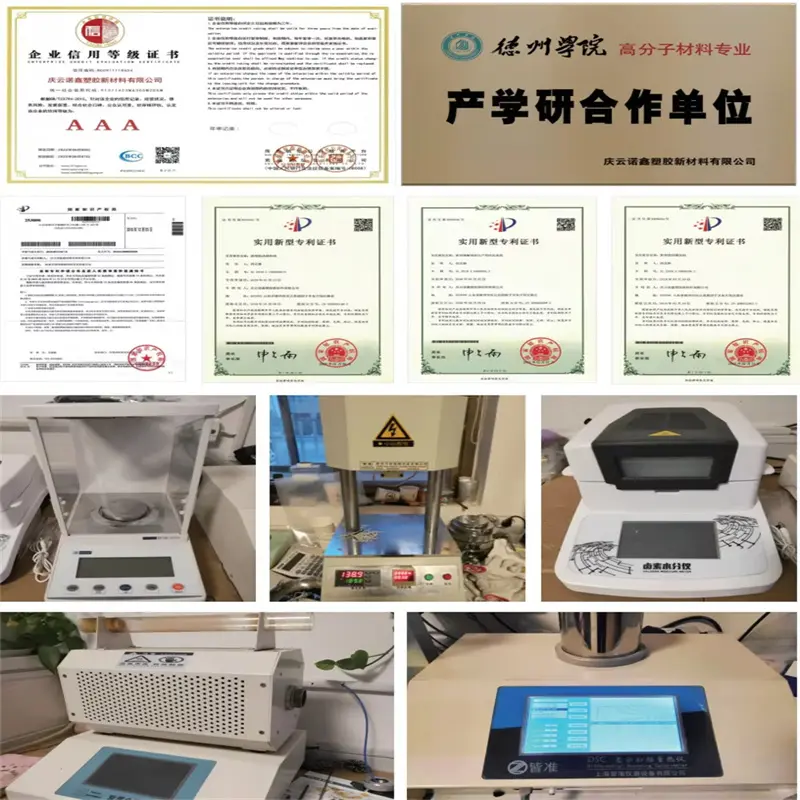
Global Market Trends
The demand for colorful plastic masterbatch is growing worldwide. Key trends include: Asia-Pacific Growth: Expanding packaging, automotive, and electronics industries drive demand in China, India, and Southeast Asia. Brand-Centric Color Matching: Brands increasingly require precise color matching to maintain global identity. High-Performance Pigments: Shift toward pigments with improved weatherability and heat stability for outdoor applications. Digital Color Matching: Rapid prototyping with AI-assisted color simulation shortens development cycles.
Customer Feedback & Case Studies
One of our clients, a European toy manufacturer, replaced their previous supplier’s yellow masterbatch with our formulation. The results were immediate: improved color brightness, no fading after 6 months of outdoor exposure, and a 15% reduction in masterbatch consumption thanks to our high coloring strength. Another case involved a Middle Eastern packaging company switching to our injection color masterbatch for cosmetic containers, where brand colors needed to remain accurate despite exposure to sunlight in retail displays.
Other Product Recommendations
While Plastic Yellow Color Masterbatch is one of our flagship products, we also offer:
Black Masterbatch: High jetness and UV protection for automotive and outdoor products.
White Masterbatch: Ultra-high brightness for film, extrusion, and molding.
Calcium Carbonate Filler Masterbatch: Saves money and is suitable for PE and PP products.
PLA Color Masterbatch: 3D Printing Filaments (Eco-Friendly Material)
Desiccant Masterbatch: Addresses moisture issues in raw materials.
Eliminates the need for pre-drying raw materials. These complementary products enable customers to source multiple solutions from a single, reliable supplier.
Packing and Delivery
Our standard packing is 25kg per bag using moisture-proof laminated woven bags or PE valve bags. For export, pallets and shrink wrapping are used to protect against transport damage. We maintain stock for popular grades, ensuring quick delivery within 7–15 days after order confirmation.
Conclusion
Plastic Yellow Color Masterbatch combines vibrant color, stable performance, and process efficiency, making it the preferred choice for manufacturers in diverse industries. Whether you need injection color masterbatch, colores masterbatch, or any other colorful plastic masterbatch, our technical expertise and manufacturing capacity ensure you get the best solution. By choosing our products, you not only gain a colorant but also a strategic partner committed to consistent quality, timely delivery, and innovation for the future of plastics manufacturing.
